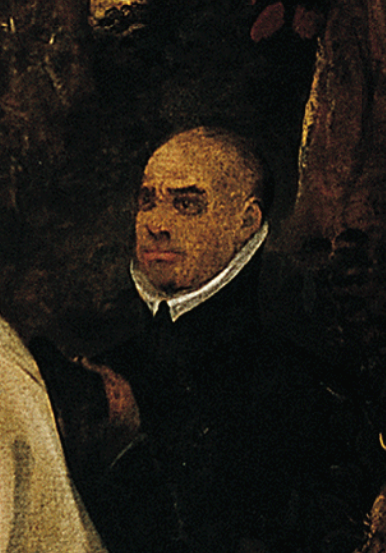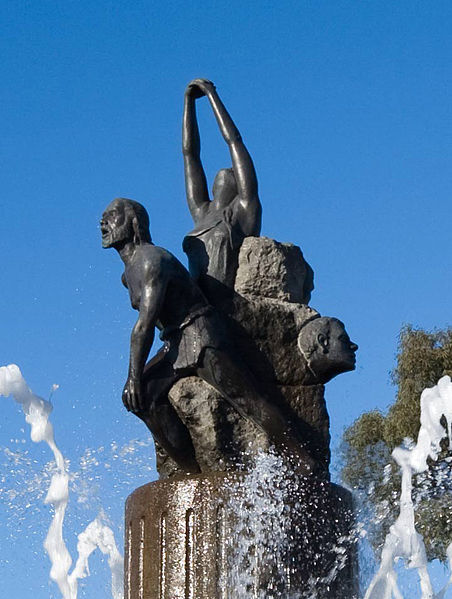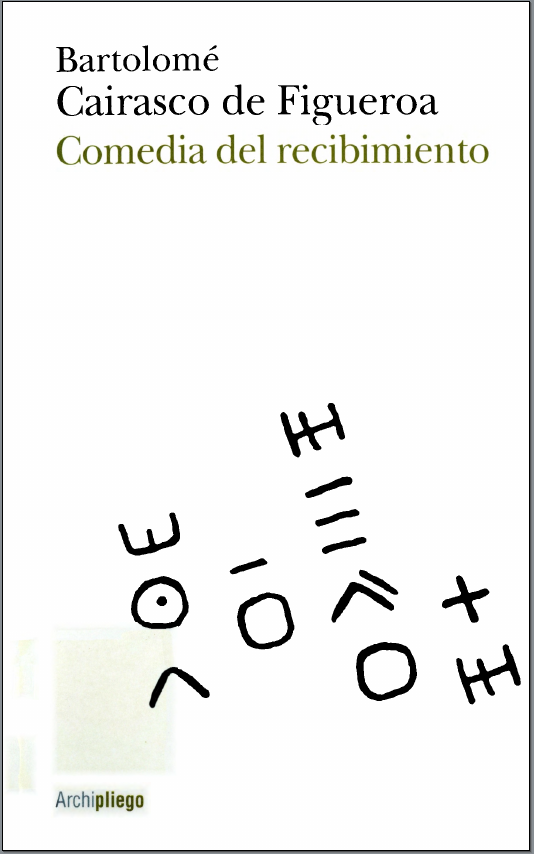DORAMAS
Guanda demedre tamaranone tasuguiet besmia
mat acosomuset tam obenir marago, aspe anhianacha
aritamogante senefeque senefeque.
CURIOSITY
What does he say, sister?
WISDOM
He is inviting us to lunch; and he says
he will give us many potages, Canarian style, and he asks us
to sit down.[1]CAIRASCO (2005), p. 34. This translation by PROYECTO TARHA.
Although not being a core work to know the ancient history of the Canary Islands, joining this to our Essentials is justified by its literary and philological significance.
Composed between 1581-1582 by Canarian canon, musician, poet and playwright Bartolomé Cairasco de Figueroa (Real de Las Palmas, 1538-1610), so-called Comedia del Recibimiento (Comedy of the Reception) is a small stage play whose destiny was to be represented to welcome the new bishop of Canaria, Fernando de Rueda. In this play, six characters –five allegorical: Wisdom, Curiosity, Invention, Gáldar and Guía, the two latter representing the homonymous Grandcanarian locations, and one historical, Canarian warrior Doramas– introduce the Archipelago virtues to the Prelate.

Bartolomé Cairasco de Figueroa depicted by Juan de Roelas in the latter’s painting Appearance of the Virgin before Saint Catherine of Alexandria, preserved in Saint Anne Cathedral, Las Palmas de Gran Canaria (source: Gaviño de Franchy Editores).
A major work
Cairasco de Figueroa is considered to be the father of Canarian Literature and Comedia del Recibimiento is a clear example of why. Although this cleric would write works of greater literary eminence, heralding Spanish baroque, like his famous Templo Militante (Militant Temple), this welcoming work in three scenes demonstrates how both Castilian and the ancient indigenous language coexisted in the late sixteenth century, although the latter was already facing its extinction. In fact, Cairasco himself was a mestizo, with both French and Canarian ancestry through his father and mother, respectively.
Indeed, through the characters of Wisdom and the famed warrior Doramas, fallen in combat exactly one hundred years before during the War of Canaria, Cairasco displays his knowledge of the indigenous language in nineteen of the dialogues that make up the plot, though evidently distorted by its translation to the Castilian phonemes and grammar.

The statue named Volcán de Doramas (Doramas’ Volcano), by sculptor José Luis Marrero, at the municipality of Arucas, Gran Canaria. A fictitious portrayal of this fearless Canarian warrior stars Cairasco de Figueroa’s Comedia del Recibimiento (source: Wikimedia Commons).
The manuscript
The first known mention of this work is owed to Brother Juan de Abreu Galindo, who transcripted a fragment corresponding to the description of the Forest of Doramas.[2]ABREU (1848), pp. 106-107.
The oldest manuscript copy of this work, titled Comedia del Reçeuimiento que se le hiço al Rmo. sor. Don fernando de Rueda obipo de Canaria en su yglesia. Compuesta por el Poeta Bartolome Cayrasco Canonigo de Canaria. 1582. 8 de mayo (Comedy of the Reception That Was Made to the Most Reverend Lord Don Fernando de Rueda, Bishop of Canaria at His Church. Composed by Poet Bartolome Cayrasco, Canon of Canaria. 1582. May 8th), is preserved as part of the Cancionero de poesías varias (An Anthology of Various Poetries) at the Real Biblioteca (catalogue number II/2803, registry number 107051), although its digitization is available only upon a fee payment.
Our recommended edition
A number of studies on the figure and work of Bartolomé Cairasco de Figueroa have been published, some of them available through Memoria Digital de Canarias. As for the own Comedia del Recibimiento, although it was already published in 1957 by Professor Alejandro Cioranescu, we recommend reading the revised edition by Professor Oswaldo Sánchez Guerra, downloadable from the above said repository.
Antonio M. López Alonso
References
- Abreu Galindo, Fr. J. de (1848). Historia de la conquista de las siete islas de Gran Canaria. Santa Cruz de Tenerife: Imprenta, Lithografía y Librería Isleña.
- Cairasco de Figueroa, B. (2005). Comedia del recibimiento : Edición, introducción y notas de Oswaldo Guerra Sánchez. Las Palmas de Gran Canaria: Ediciones Archipliego.

